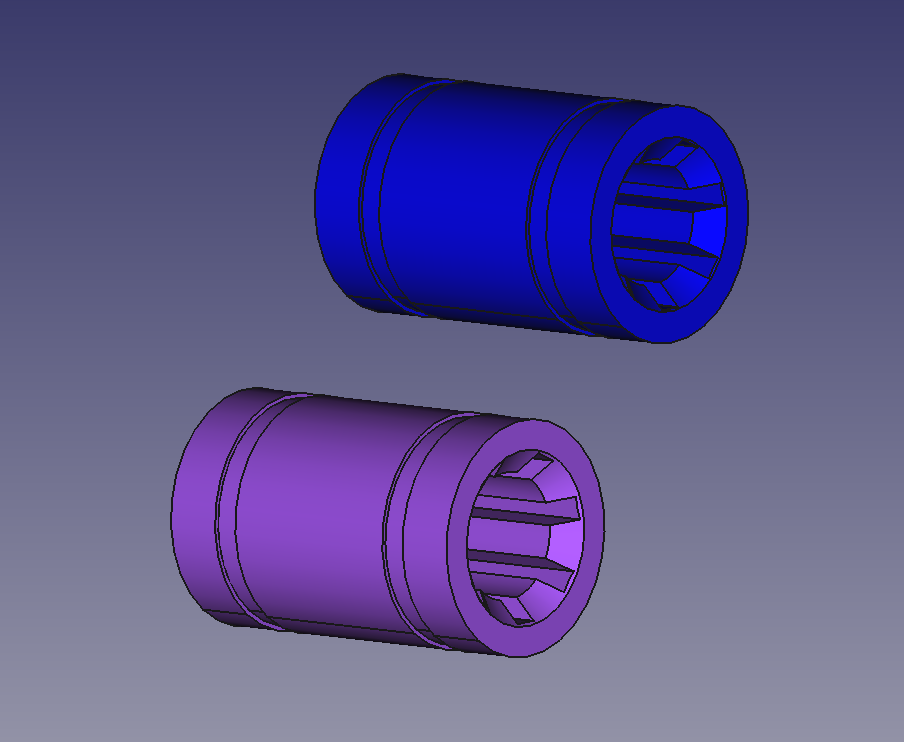
LM5UU from PETG
prusaprinters
<p>For a miniature drawing machine I needed linear bearings that fit on the non-hardened 5mm stainless steel rods that I had still available. The parts are designed in FreeCad and printed in PETG on a Prusa I3 MK3S. I have done experiments with different nominal inner diameters and came to the conclusion that designs with 5.2mm and 5.3mm nominal diameter are most sensible. (It was my experience already that on a 5mm hole you need about 0.2mm extra margin to get a good fit to a metal axis, as holes tend to come out slightly smaller than designed.)</p> <p>I have printed two pieces each and tried them on the 5mm steel rod, which I had only very slightly rubbed with fine sandpaper before, to smooth the surface.</p> <p>The 5.3mm pieces (called ... <em>053</em> in the file name) are a rather loose fit without any need for post processing. But one can feel (but not see) a tiny little bit of mechanical play. If you want very quick results and absolutely no extra work, use these.</p> <p>The 5.2mm pieces (called ... <em>052</em> in the file name) are a relatively tight fit. They can be moved on the rod without too much force, but are definitely not sliding down when the rod is held upright. I have used a 3mm needle file to very mildly file around the inner surface of the parts. Every few seconds I have slid the bearing on the rod to see how well it glides. Within a minute per part, you get perfectly sliding bearings that show no noticeable play. If you want perfect results, use these. (A rolled up piece of fine sand paper will probably also do a good job for the fine tuning process).</p> <p>The outer diameter of the parts is nominal 9.8mm, which results in prints with measured diameters between 9.87 and 9.97mm. As a linear bearing shall have no positive tolerances on their outer diameter, I have opted to keep it like that. (For reference, LM5UU from metal are specified to 10mm +0 -0.009)</p> <p>Just in case you wonder, the two bearings on the rod in the photograph are not having grooves, as these were some of my earlier prototypes.</p> <p>Have fun with this print, build cool machines and please lets us others know what you did with these parts.</p> <h3>Print instructions</h3><p>Print this in PETG with 100% infill in upright orientation on a Prusa I3 MK3S. I am sure it can be printed on other printers as well, but I have found that my Ender 3 Pro gives significantly different results when it comes to very precise fittings. A difference of 0.1-0.2mm has a really heavy impact on such bearings, therefore I stuck to my Prusa which I know gives very precise and repeatable results.</p> <p>I have used silver grey filament from German supplier DasFilament.de, which I am more than happy with.</p>
With this file you will be able to print LM5UU from PETG with your 3D printer. Click on the button and save the file on your computer to work, edit or customize your design. You can also find more 3D designs for printers on LM5UU from PETG.
